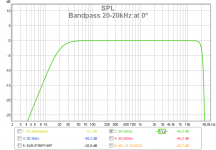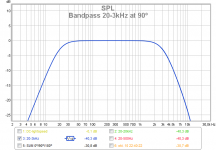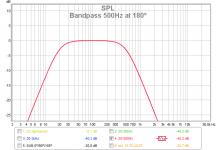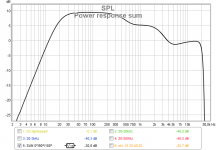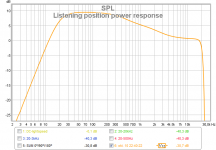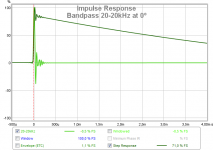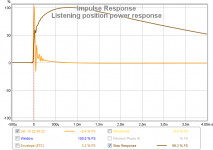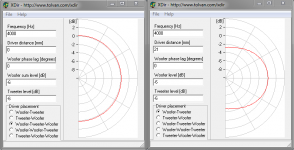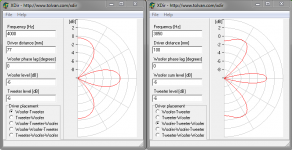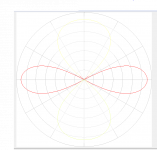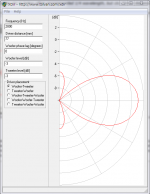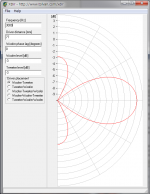Jeshi, were you able to build two pieces of your trapezoidal faceted sealed 10f/8424 and conduct listening tests in stereo?
PS. I’m tackling a different project (addresses the step response issue in a 3-way context), but that does not stop me from admiring Jeshi's and xrk971's efforts (also Wesayso).
Excellent work!
PS. I’m tackling a different project (addresses the step response issue in a 3-way context), but that does not stop me from admiring Jeshi's and xrk971's efforts (also Wesayso).
Excellent work!
@GregB, the Bessel is 2nd order electrical.
Right, yeah. I misread it. That's what I get for commenting before coffee again...
.....I wouldn't call this STEP transient perfect but it has a good continuous flow in the phase. Transient perfect STEP would be flying higher for a longer duration.....
They should get some flying higher when measuring at listening position "Power response" verse short distance "Frequency response" measurement and speaker is in a room.
Picture 1 (short distance on axis response bandwidth 20-20kHz)
+
Picture 2 (90º off axis response bandwidth 20-3kHz)
+
Picture 3 (180º off axis response bandwidth 20-500Hz)
=
Picture 4 (Sum power response and lets smooth that out and use picture 5 instead)
Picture 6 is IR/SR belonging picture 1, picture 7 is IR/SR belonging picture 5 and when compare these get some flying higher SR. Having slope that fall of as frq rise show gives the soft rising on SR also seen on the line arrays SR plot.
Attachments
jcarr, sorry I have too many projects started and have yet to make a pair of anything (lol). Right now I am using the SB65 TL (or focal cms40) on the left and my other speakers on the right. But I think I am reaching the breadth of my explorations now (no more different designs) so now I can explore more the depth of each design.
I will probably work on the new baffle for the RS28f/satori next and then build the second 10f faceted pyramid. At least I have cut the foam for the second 10f
On a slightly different topic, is everyone OK with these very different designs all being lumped together into a single thread (some are full range, some are multiway) only connected by the EVA material? Or should I split the "2way satori" and "3way compact monitor" off into separate threads in the multiway section?
I will probably work on the new baffle for the RS28f/satori next and then build the second 10f faceted pyramid. At least I have cut the foam for the second 10f
On a slightly different topic, is everyone OK with these very different designs all being lumped together into a single thread (some are full range, some are multiway) only connected by the EVA material? Or should I split the "2way satori" and "3way compact monitor" off into separate threads in the multiway section?
byrtt, thanks for these simulations. I am really starting to understand how all these different measurement graphs are connected to each other.
Looking at my impulse and step response, it looks like I am hitting the 100% point briefly, and staying above 80% for about 250usec, and I cross the line at about 1.2msec which seems to match your 100-20khz simulated step response.
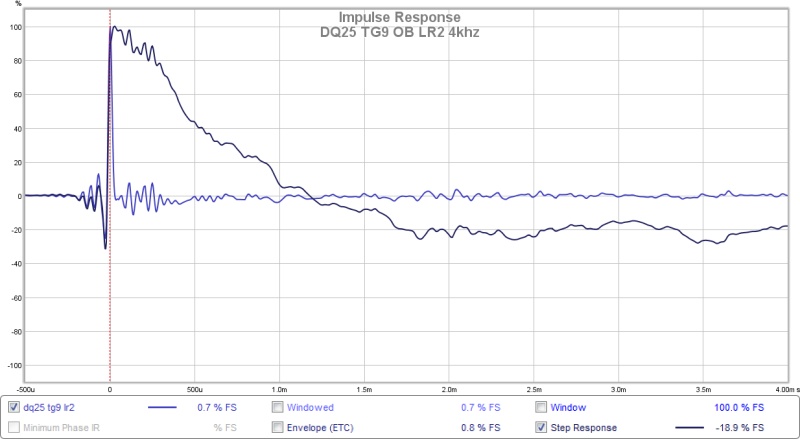
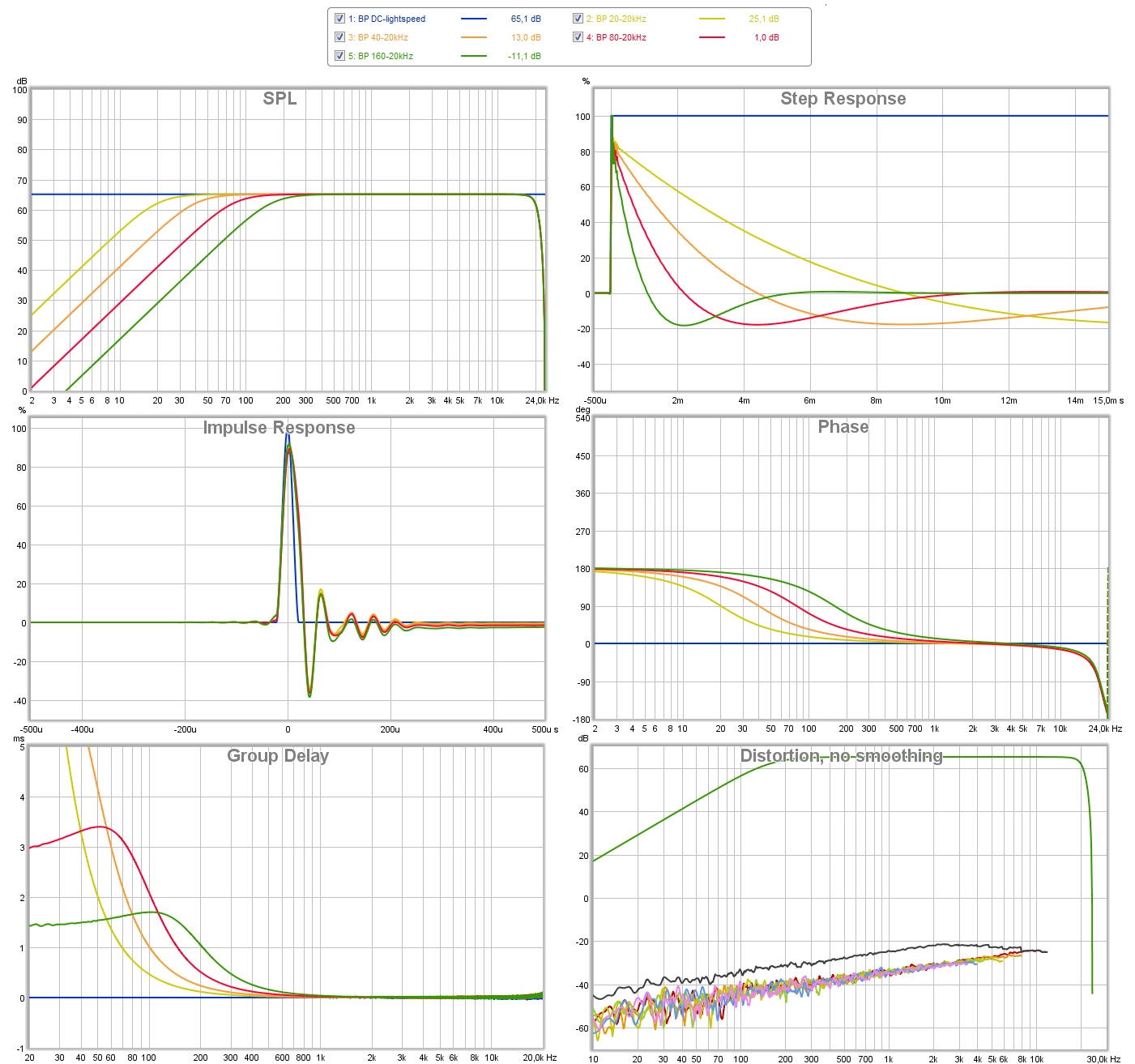
What I have noticed in my various step responses, is that the smoother my frequency response the less wiggles and the straighter the slope of the step. It also seems that the accuracy of the time alignment and phase is linked to the cleanness of the rise of the step. In reverse, if I optimize for a clean rising step(no double peaks, no ringing, no sharp shifts, rising on the 0time point) and clean curve/slope, then I get good phase response and good frequency response. So I am starting to realize that getting textbook flat frequency response is important for many things and not just for the tone of the speaker. So starting with smooth response drivers that can be easily eqed seems important.
Looking at my impulse and step response, it looks like I am hitting the 100% point briefly, and staying above 80% for about 250usec, and I cross the line at about 1.2msec which seems to match your 100-20khz simulated step response.


What I have noticed in my various step responses, is that the smoother my frequency response the less wiggles and the straighter the slope of the step. It also seems that the accuracy of the time alignment and phase is linked to the cleanness of the rise of the step. In reverse, if I optimize for a clean rising step(no double peaks, no ringing, no sharp shifts, rising on the 0time point) and clean curve/slope, then I get good phase response and good frequency response. So I am starting to realize that getting textbook flat frequency response is important for many things and not just for the tone of the speaker. So starting with smooth response drivers that can be easily eqed seems important.
Same thread, please. Makes it way easier to follow the action!!!
I am happy to keep this all together, just wanted to check with the forum rules for mixing fullrange and multiway builds in the same thread. I also agree that it is easier to follow if it is all together and it will be easier to reference back to.
Jeshi, in addition to sheer curiosity about the sound that you were getting, after recalling you saying how small your apartment was, seeing how many different types of speakers you have at hand made me wonder how on earth your floor space was coping. 
As a reader I’m fine with having all of your experiments contained in this thread.
OTOH, since this thread’s dominating theme has been full-ranges, while my own current interest is multi-way, I’ve mostly kept my muzzle on.
Since there is no single “Loudspeaker” subforum, how about splitting out your threads with a common "Jeshi's EVA foam" thread prefix, as in "Jeshi's EVA foam 2way Satori", "Jeshi's EVA foam 3way Compact Monitor"? It would keep things more organised than mixing everything together, while making it easier for present and future readers to search for specific topics.
BTW, have you read this thread on the "Ardor" 3-way point-source monitor? I believe that there are at least a few things which you may find interesting, besides, it is conceptually the closest thread (that I have been able to find) to what I am working on.
http://www.diyaudio.com/forums/multi-way/193689-build-thread-ardor-point-source-monitor.html
kind regards, jonathan
As a reader I’m fine with having all of your experiments contained in this thread.
OTOH, since this thread’s dominating theme has been full-ranges, while my own current interest is multi-way, I’ve mostly kept my muzzle on.
Since there is no single “Loudspeaker” subforum, how about splitting out your threads with a common "Jeshi's EVA foam" thread prefix, as in "Jeshi's EVA foam 2way Satori", "Jeshi's EVA foam 3way Compact Monitor"? It would keep things more organised than mixing everything together, while making it easier for present and future readers to search for specific topics.
BTW, have you read this thread on the "Ardor" 3-way point-source monitor? I believe that there are at least a few things which you may find interesting, besides, it is conceptually the closest thread (that I have been able to find) to what I am working on.
http://www.diyaudio.com/forums/multi-way/193689-build-thread-ardor-point-source-monitor.html
kind regards, jonathan
Last edited:
.....
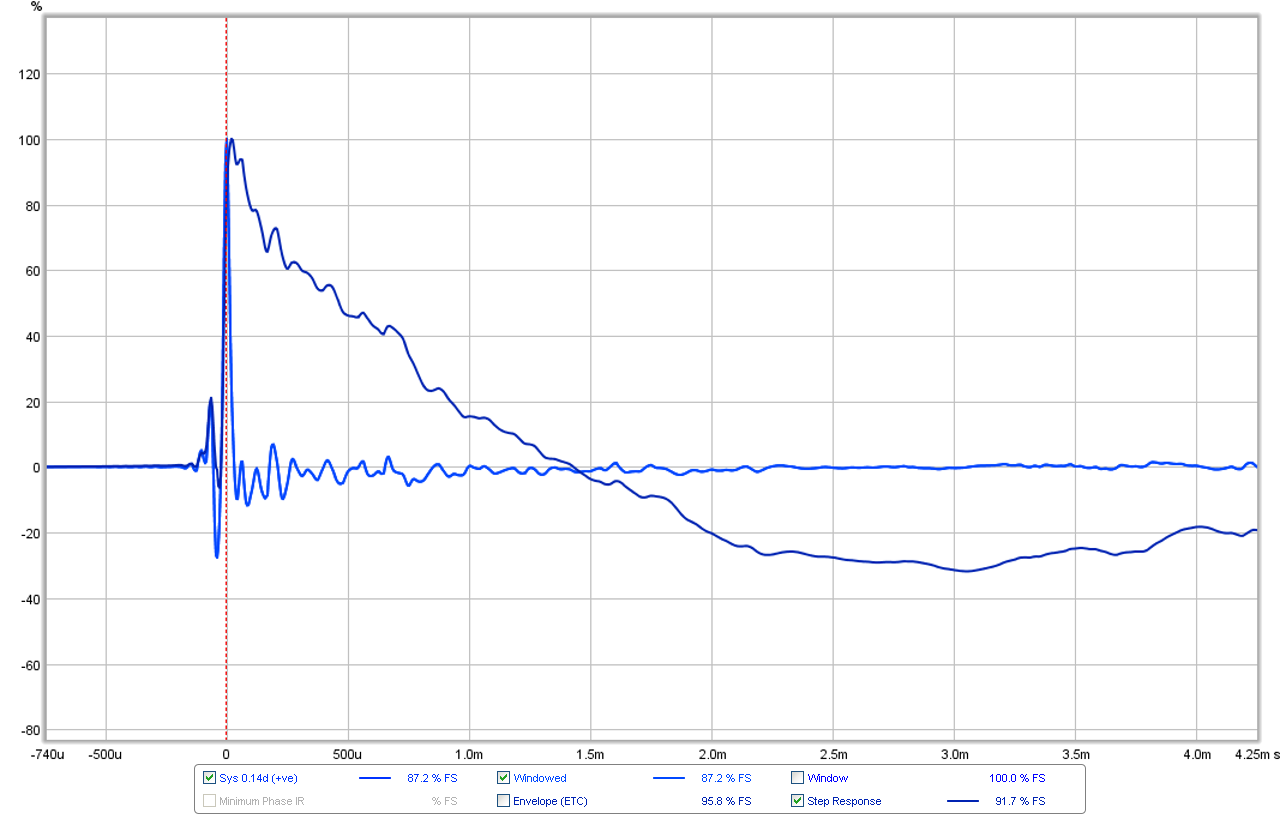
.....One may ask, why not just use the TG9FD all by itself, it seems to look pretty good after EQ? Well here is the TG9FD only phase:
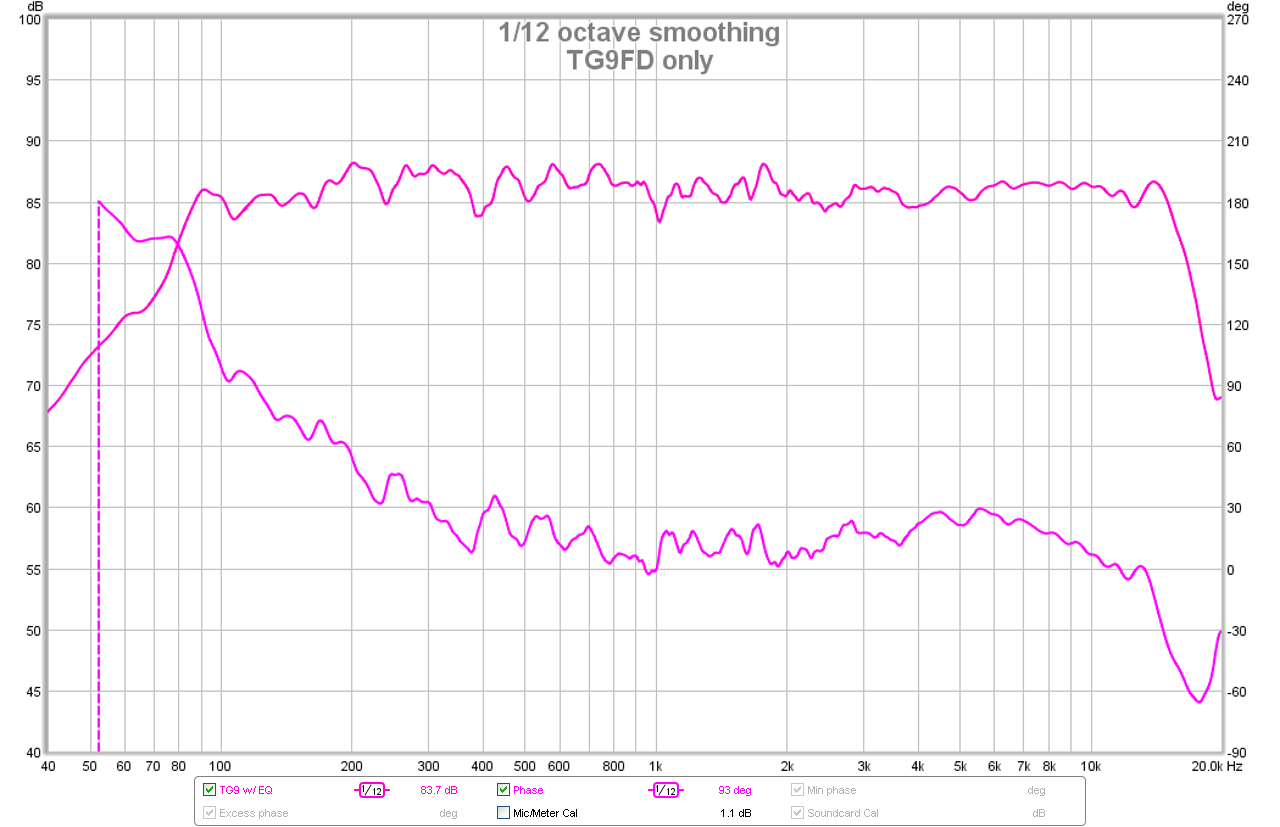
And here is the TG9FD only IR and SR - not as good as the combined 2-way sysem - mostly because such a steep cutoff is acoustically imposed on the driver at the high frequencies. Byrtt has shown electronic experiments that show this causes the overshoot and ringing in the IR and leading peak on the SR.
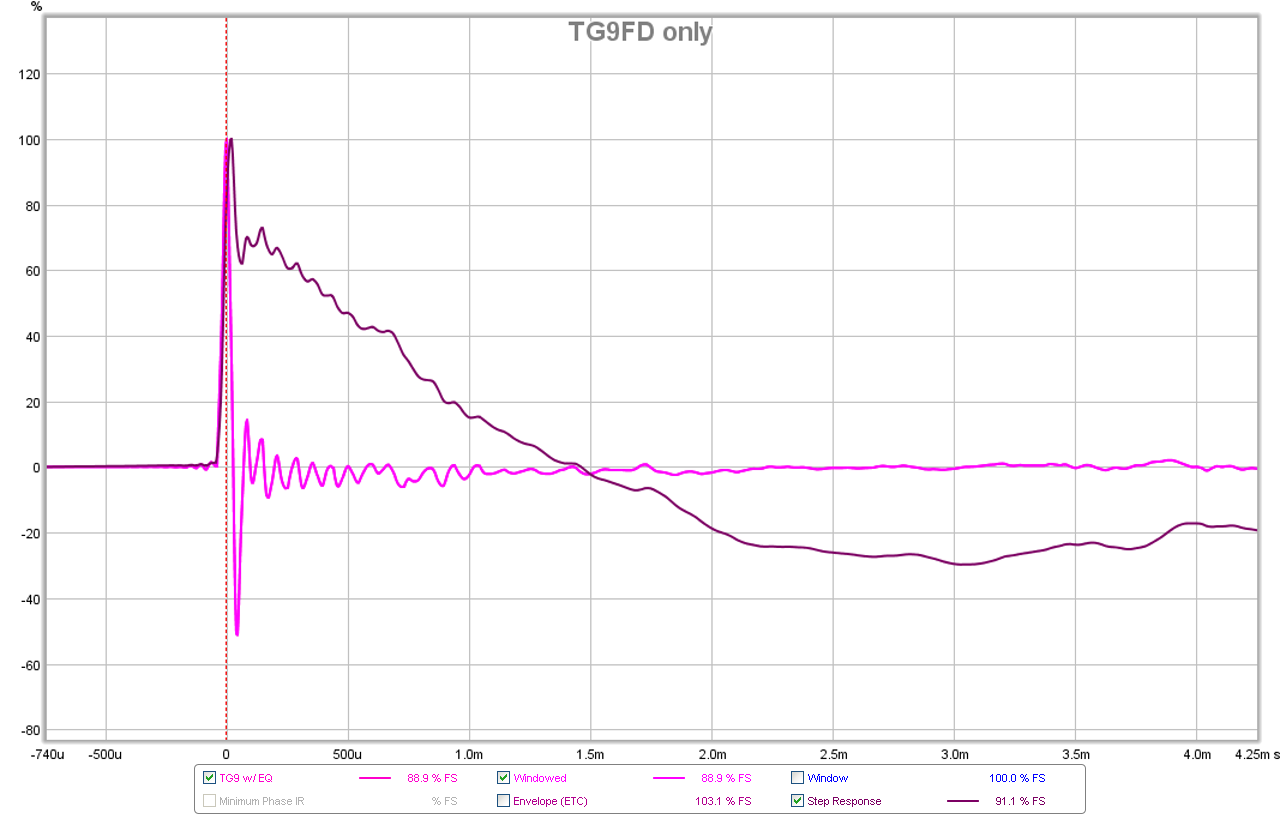
Tweeter improve IR/SR on axis but seems lock ears listening height window in XO area some.
Picture 1 XO area vertical lobe configured as W/T 4000Hz ctc 77mm, then configured as W/T/W 3850Hz ctc 100mm.
Picture two 4000Hz area zero ctc distance then the vertical lobe when ctc is below often recommended 1/4 wavelength, but ctc 21mm distance is not possible.
All these trade offs seems we will never hang on to wesayso's XO-less line arrays, maybe to get closer build as Barleywater LX mini clones or some kind Synergy build or clone the line arrays : )
Attachments
.....A little family picture for everyone
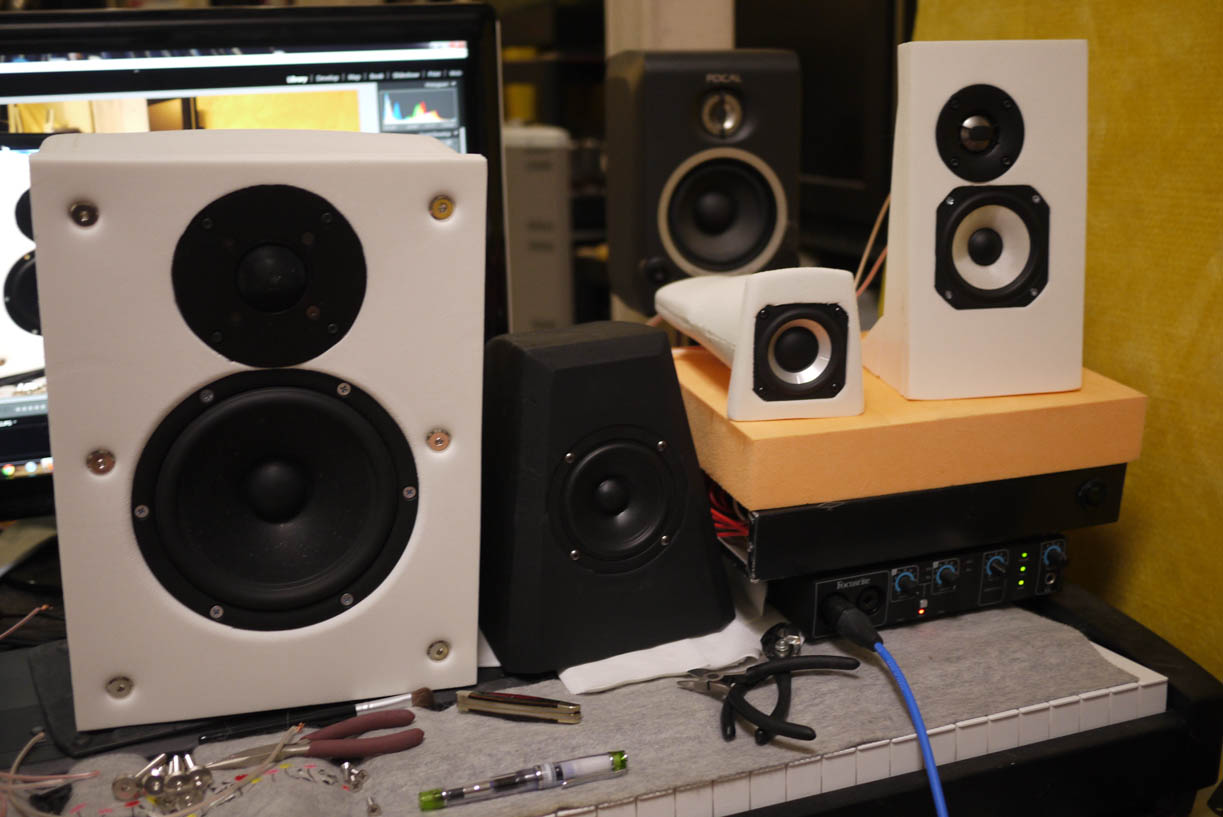
.....
Wow
Wesayso,
Your SR is the most impressive of any speaker I have ever seen. How can we ever compete with you? To be fair, the TG9 here has bandwidth from 100Hz up vs your array 17Hz so of course it won't have much staying power beyond a few ms. Once integrated with a woofer that will take it down to 40Hz it will do better but will still be >2x less than your 17ms. So I am guessing maybe 7ms at best.
@GregB, the Bessel is 2nd order electrical. There is some EQ shaping to flatten things before the XO so it would take more of an effort to have a good baffle that is either offset, trapezoidal, or rounded edges to minimize diffraction and also flush mount the tweeter bezel - which I have not done here.
Here is step response of Pluto used with cardioid sub:
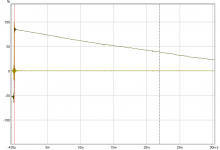
This monster makes the locomotive run through the living room.
Here is step response of Pluto used with cardioid sub:
View attachment 508362
This monster makes the locomotive run through the living room.
Nice. What drivers are uses in the cardioid sub? Is the response down to single Hz?
Tweeter improve IR/SR on axis but seems lock ears listening height window in XO area some.
Picture 1 XO area vertical lobe configured as W/T 4000Hz ctc 77mm, then configured as W/T/W 3850Hz ctc 100mm.
Picture two 4000Hz area zero ctc distance then the vertical lobe when ctc is below often recommended 1/4 wavelength, but ctc 21mm distance is not possible.
All these trade offs seems we will never hang on to wesayso's XO-less line arrays, maybe to get closer build as Barleywater LX mini clones or some kind Synergy build or clone the line arrays : )
This is very interesting! I didn't know about Xdir, This looks like a great tool, thank you for sharing. Tolvan Data
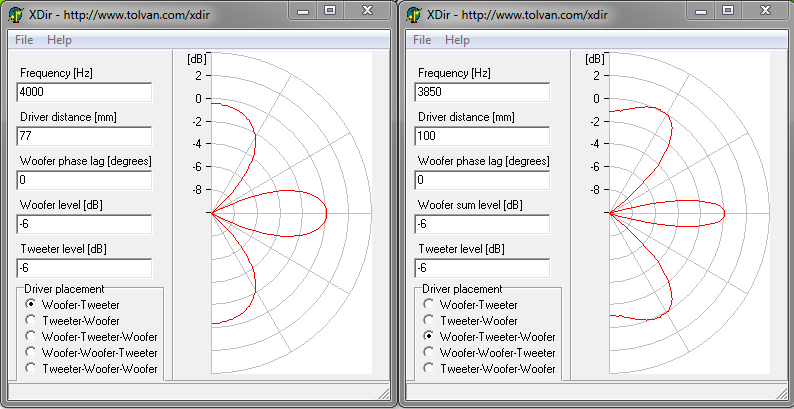
I am guessing a little here, but looking at this directivity and then add in the nulls at 180deg created from a open baffle dipole, would this not create a very focused forward/rear directivity with almost no energy on the sides? Maybe something like this? again just guessing, but honestly this is what I am hearing from this speaker as I walk around it (about 20deg of direction beam forward/back with almost nothing to the side, above or below)!!

Playing with Xdir, I think I definitely want to see if I can do a 3khz or 2.8khz LR2 as well as I was able to do the 4khz LR2.
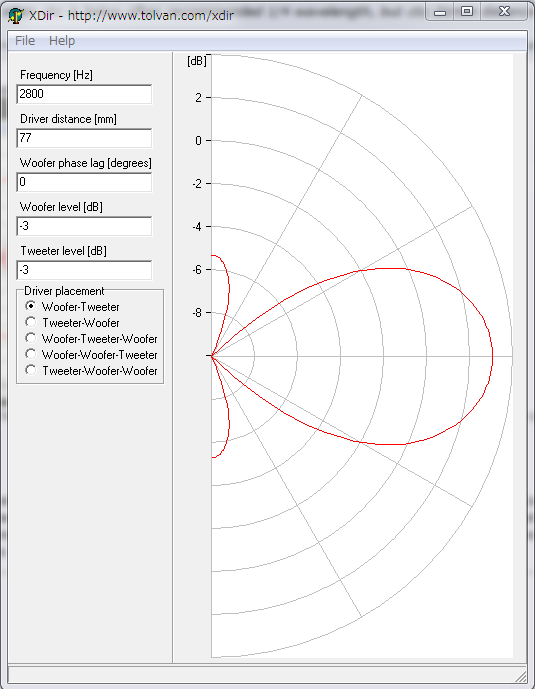
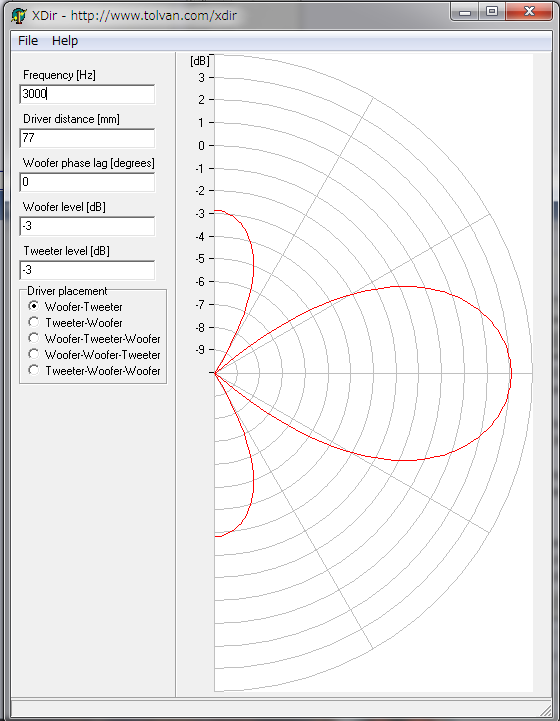
I am finding this little DQ25/TG9 4khz LR2 OB incredibly spacious and refined sounding, even as a single mono speaker! It is reminding me a little of my larger acoustat 1+1 electrostatics. Maybe it is the dipole nature combined with the clean LR2 crossover integration (flat phase, time alignment clean step). Or maybe it is the character of the driver (low distortion, low mass? titanium dome? fast transients?). But I also know I can get impressed with a new build so I will try not get too excited. But if this really is what I am hearing then this is quite incredible for under $45 in drivers (and a miniDSP and amps). I definitely will pick up a second set of DQ25/TG9 to make a pair. Compared to the SB65 TL it is really night and day and much closer to my electrostatics and the RS28f/satori. I just can't stop listening to them, and they pull me into the music like my electrostatics do.
I actually love this directivity. Creates very few room interactions since the side energy is very reduced. Reduces reflection from side wall, ceiling, and most importantly reflections off of the keyboard/mixing decks that are usually right under the speaker. Remember I am designing a near field monitor, where usually a single engineer is sitting in the center position (locked in), not moving around the room. Yes it does create a very small sweet spot both horizontally and vertically, but the benefits of "removing the room" far out weigh this for me and why I love my acoustats.
But do realize that I am a midrange/treble/electrostatic lover (female vocals, pianos, guitars, violin, flute..) so bass is secondary to me to midrange.treble quality. Of course I will add a woofer (planning an 8" slot-loaded-open-baffle, also a directive speaker), but I could live with these as they are for many types of music I listen to and for working with many midrange instruments/vocals.
barleywater I am also very curious about your cardiod subwoofer. Can you share the link to your thread/design?
Attachments
Last edited:
Thinking about how this recent discussion is going, I am starting to see there are maybe very different design goals here for different people. I mean a highly directive, electrostatic like, 3way nearfield monitor is almost the complete opposite design target as wesayso's no XO, fullrange line array: a room filling, high SPL, far-field (+2.5m listening distance), wide dispersion, large sweet spot speakers. I am thinking I really should split my multiway nearfield monitors into a different thread. Maybe just combine the 2way satori and 3way compact nearfield since they both share the same target of nearfield monitor. Maybe "EVA foam performance nearfield monitors" in the multiway section 
And I can leave this thread for fullrange builds and for general discussions about EVA foam properties and tests.
And I can leave this thread for fullrange builds and for general discussions about EVA foam properties and tests.
Last edited:
Jeshi,
The OB's do have nice reduction in reflections. If that is what you like, you must try a synergy style horn. My Trynergy with a full range driver has completely no junk from walls to mess with the sound. Take a look at what Kees was able to do with a single Visaton FR8. The tractrix has pretty narrow directivity and superb dynamics and low HD as the cone hardly has to move (25 microns to achieve 90dB).
He was able to do this with no active EQ or DSP. Just a single 6.8uF high pass cap at speaker level.
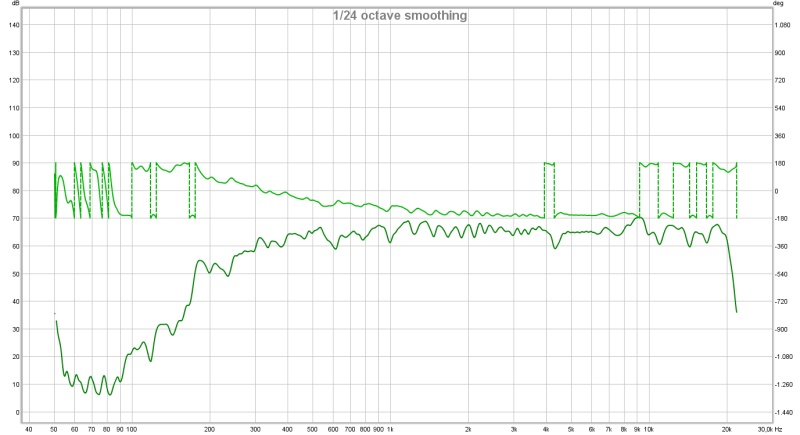
The OB's do have nice reduction in reflections. If that is what you like, you must try a synergy style horn. My Trynergy with a full range driver has completely no junk from walls to mess with the sound. Take a look at what Kees was able to do with a single Visaton FR8. The tractrix has pretty narrow directivity and superb dynamics and low HD as the cone hardly has to move (25 microns to achieve 90dB).
He was able to do this with no active EQ or DSP. Just a single 6.8uF high pass cap at speaker level.

Last edited:
Tweeter improve IR/SR on axis but seems lock ears listening height window in XO area some.
Picture 1 XO area vertical lobe configured as W/T 4000Hz ctc 77mm, then configured as W/T/W 3850Hz ctc 100mm.
Picture two 4000Hz area zero ctc distance then the vertical lobe when ctc is below often recommended 1/4 wavelength, but ctc 21mm distance is not possible.
All these trade offs seems we will never hang on to wesayso's XO-less line arrays, maybe to get closer build as Barleywater LX mini clones or some kind Synergy build or clone the line arrays : )
Thanks for these polar plots Byrtt. I am quite sure I don't hear this narrow beam when moving my head up and down - I will measure and see. Is it only at the XO frequency of for all frequencies above the 3850 Hz XO?
I've heard most of the B&G neo planars. They are pretty nice, but I can't give you a detailed evaluation because the amps and source they were connected to were a limiting factor. (high power mosfet).
Thanks Greg.
And I hear now there is some production concistency problems ! mean with the few Neo 8 & 3 avaliable yet. Don't know if urban Rumor...
Thanks for these polar plots Byrtt. I am quite sure I don't hear this narrow beam when moving my head up and down - I will measure and see. Is it only at the XO frequency of for all frequencies above the 3850 Hz XO?
Guess its XO region dictated by order of slope, to get over this ctc problem wish they made a special coxial TC9/TG9/10F with a cute little mini tweeter into dustcap position XO 7-12kHz and up : )
No problem there be tweeter output but visual there is some difference in the model between using TG9 all the way up (Picture 1), the less than quarter wave ctc distance as recommended to form a point source (picture 2), OB TG9FD/DC28F/TG9FD (Picture 3), and for fun same with a 7kHz XO (Picture 4).
Regarding running TG9FD as tweeter all the way up one could try EQ LP roll off slope, i mean not press and extend -3dB point but try get a softer slope ala BW2 or softer, this must give less over/under shoot.
New Trynergy plots looks very promising.
Attachments
Last edited:
- Status
- This old topic is closed. If you want to reopen this topic, contact a moderator using the "Report Post" button.
- Home
- Loudspeakers
- Multi-Way
- OB compact 3way nearfield monitor
